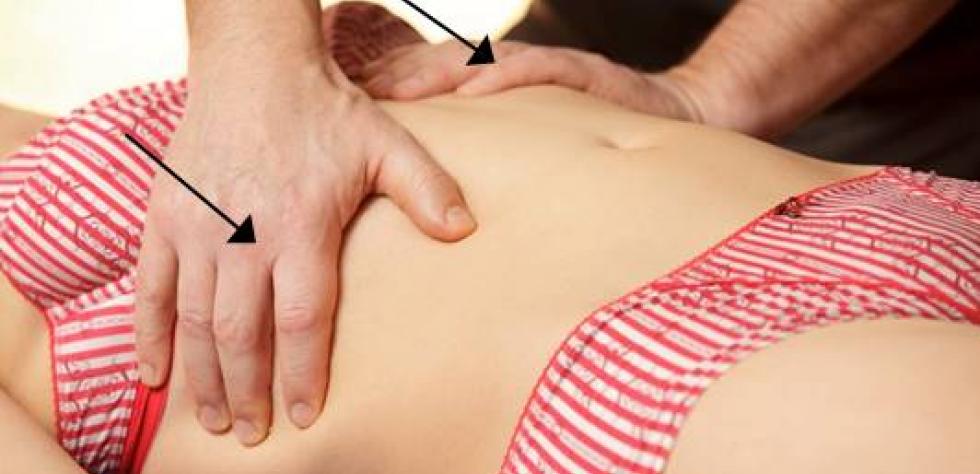Examples of scientific poster accepted in Fascia Research Congress 2015
Payrau B., Quéré N., Payrau M.C., Breton E. - Fasciatherapy and Reflexology, compared to Hypnosis and Music therapy in stress management
Dupuis Cyril - A combination of qualitative and quantitative approaches to evaluate the effect of DBM Fasciatherapy on the pain of patients suffering from fibromyalgia.
Rosier Philippe - Fasciatherapy Danis Bois method and the physical and psychological recovery of elite athletes
Examples of scientific poster accepted in British Fascia Congress 2016
Christian Courraud, Danis Bois, Anne Lieutaud - Study of the identity changes of a group of physiotherapists who practise DBM Fasciatherapy.
Poster abstract : Hypotheses and objectives - Regarding the opportunity for physiotherapists to integrate knowledge about fascia within their clinical practice and to develop a new perspective about somatic disorders [1], we hypothesize that physiotherapists practising DBM Fasciatherapy may have made professional adjustments, and in particular identity shifts [2]. This research investigates the existence of identity changes amongst French physiotherapists who practise Fasciatherapy. A quantitative survey was conducted amongst a population of practitioners, with a view to: Identifying the impacts of the changes resulting from Fasciatherapy practice and Exploring and characterizing the existence of various identity profiles. Material and method - We used a self-administered customized questionnaire investigating 5 dimensions: professional characteristics, professional identity features, DBM Fasciatherapy practice modalities, changes in the professional practice and impacts on professional and private life. The questionnaire was forwarded through the internet to a population of 446 physiotherapists trained in Fasciatherapy. Results - General characteristics of the data and the population: 238 questionnaires were completed (53% of the population surveyed) ; They are mostly women (65%), between 30 and 44 years old (44%), preferably using manual therapy techniques (70,2% having a speciality in that field). An in-depth descriptive statistical analysis shows a large diversity of impacts and changes that the respondents associate to their practice of Fasciatherapy: 45% have started their own practice after the training, 75,6% see their patient base changing, 54,6% have broadened their patient intake (with more chronic conditions) ; We then carried out a multivariate analysis to study how such changes could be associated vith varying identity profiles. 3 Identity profiles appeared significant, characterised and opposed to one another : Physiotherapist profile (17,6% of the sample), Physio-fasciatherapist profile (55,5% of the sample), Fasciatherapist profile (26,9 % of the sample). Discussion and conclusion - Practising Fasciatherapy has an impact on the professional practice and identity traits. A significant proportion of the practitioners combine the identities of physiotherapist and fasciatherapist, and few of them remain physiotherapists. These profiles are defined with regards to the statutory, professional and practical characteristics of Fasciatherapy.
Christian Courraud, Anne Lieutaud, Cyril Dupuis - DBM fasciatherapy and pain: practitioner’s perspective
Poster Abstract : Background - Recent researches on fascia show its rich innervation and connections to the central nervous system and also highlight fascia-oriented pain treatment [9, 10]. Fascia is involved in nociception and reveals to bear its own kinds of pain, more affective than cutaneous or muscular pain [8]. Massages or manual technics are often used to alleviate pain, through their action both local and central. In this context, manual therapies addressing the fascia appear relevant to address the different aspects of pain (sensitive, emotional and cognitive). The project is here to assess fasciatherapy efficacy on pain reduction or management, from the perspective and experience of the practitioner. Approach - Within the many existing fascia therapies, we focused on DBM fasciatherapy [7]. Its impacts on pain management have been positively investigated on fibromyalgia [5] and anxiety [6]. Within a doctoral research on professional identity changes in a population of 446 French physiotherapists practicing this DBM fasciatherapy, an online-survey was conducted using a self-administered customized questionnaire. One of the four dimensions investigates the benefits reported on pain treatment. Responses to this specific set of questions are here presented. Results - Most of the respondents use a manual approach. They express a strong feel of improvement of their efficiency for physical (96%) and psychological (84%) pain. Their feel of best and strongest efficicacy is on headaches (46,2%), neck pain (34,5%), acute low back pain (32,9%), chronic low back pain (19,7%), migraines (15,5%), pain of the back (15,1%), digestive troubles (37%), stress (23,5%), twisted ankle (19,3%), fibromyalgia (13%) and pain in general (12%). Conclusions - Fascia therapy, using a manual touch such as in DBM fasciatherapy, seems to improve physiotherapists efficacy in their treatment of pain, in all its different forms (headaches, back pain, fibromyalgia, etc) and different dimensions (physical, emotional and cognitive).
---------------------------

